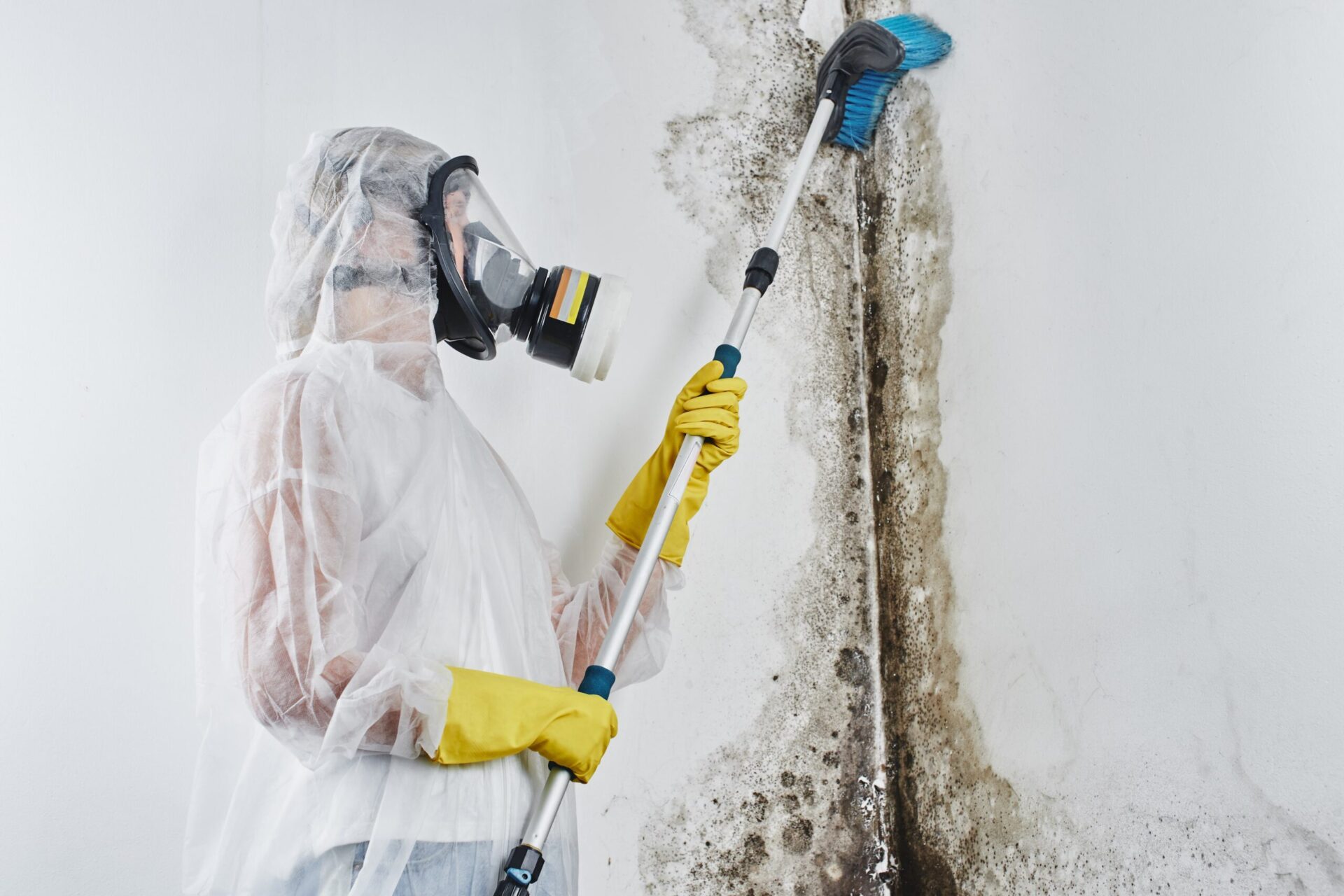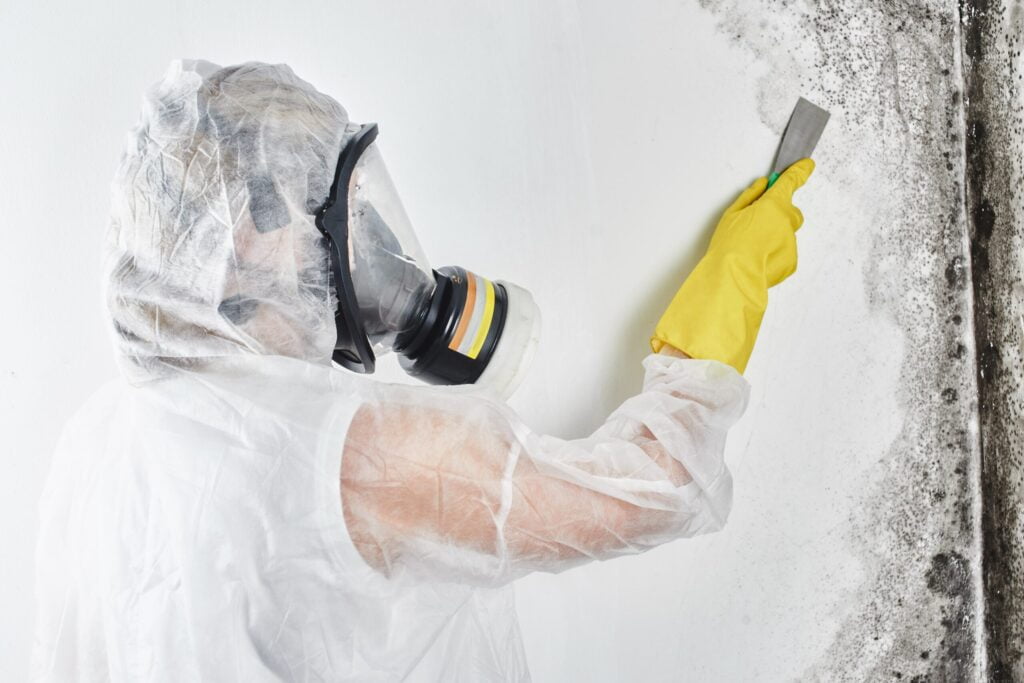Surface mould inspection is key to spotting and stopping mould growth on different surfaces. It’s vital for keeping our surroundings healthy. This process uses various methods to find and stop mould before it spreads.
In Cairns, where mould is common, checking for mould is crucial for our health. By using the right methods, we can find where mould might grow and stop it. This blog will dive into surface mould inspection, offering tips on how to manage mould effectively.

Understanding Surface Mould Inspection Basics
Surface mould inspection is key to spotting and stopping mould in different places. It uses methods like looking closely and testing for moisture. Knowing about mould types, where it grows, and how to spot it is important.
There are many places where mould can be found, like homes, schools, and businesses. Using mould inspection methods helps catch it early. This way, we can stop it from getting worse. Regular checks can keep our places safe and healthy.
- Visual assessments to identify signs of mould presence, such as black spots and musty odors
- Moisture testing to detect excess moisture, which can contribute to mould growth
- Air quality sampling to identify mould spores in the air
By using these methods, we can find and fix mould problems. This helps keep us and our places safe. It’s important to check for mould often to keep everything healthy.
Health Risks Associated with Surface Mould
Checking for surface mould is key to spotting health dangers. Mould can harm people, especially those with weak immune systems. It can cause breathing issues, allergic reactions, and even brain damage.
Common health problems from mould include:
- Respiratory issues like asthma and bronchitis
- Allergic reactions like sneezing and skin issues
- Neurological problems such as headaches and memory loss
Knowing the risks of mould is vital. We must act to stop mould from growing and check surfaces well. Regular checks can find mould early and avoid health issues.
To lower mould risks, we should prevent its growth and inspect surfaces often. This includes checking for mould, testing air quality, and stopping mould from spreading. These steps help keep us safe from mould’s harmful effects.
Professional Mould Inspection Methods and Techniques
Professional mould inspection is key for managing mould effectively. It uses visual checks, moisture tests, and air quality samples to find mould. This method helps spot hidden mould that’s hard to see.
Methods like thermal imaging and borescope inspections find mould in tough spots. These tools are crucial for finding mould and getting accurate results. Checking surfaces for mould is vital to stop it from growing and keep our environment healthy.
- Visual assessment procedures to inspect surfaces for signs of mould growth
- Moisture testing equipment to detect hidden moisture that may be contributing to mould growth
- Air quality sampling to identify mould exposure
- Laboratory testing protocols to provide accurate results
Mould inspection methods are vital for managing mould on surfaces. Professional inspections are essential for finding and stopping mould growth.
DIY Surface Mould Inspection Tips
In Cairns, you can check for surface mould yourself. A good start is to use a mould testing kit. It helps find mould on different surfaces.
Look for signs like discolouration, water stains, or musty smells. Using a dehumidifier can also stop mould from growing. Here are some key tips:
- Regularly check surfaces for mould signs
- Use a mould testing kit to find mould
- Lower moisture with a dehumidifier
- Improve air flow to stop moisture buildup
While DIY checks are useful, they’re not as precise as professional ones. If you think there’s mould, get expert help. Mixing DIY and professional checks helps manage mould well and keeps you safe from health risks.
By following these tips and using mould detection methods, you can fight mould growth. This makes your home healthier and safer.
Advanced Mould Inspection Methods for Different Surfaces
Advanced methods are key for finding mould on different surfaces. Techniques like advanced air quality sampling and lab tests give accurate results. In Cairns, where it’s humid, these methods are vital for a safe, healthy space.
Specialized tools and techniques are used in surface mould inspection. For example, finding mould in porous materials like drywall and wood needs specific gear. Tools like thermal imaging and moisture testers work on non-porous surfaces. Hidden mould can be found using borescopes or cameras in tight spots.
- Advanced air quality sampling
- Laboratory testing
- Thermal imaging
- Moisture testing
These methods help find mould on various surfaces. They ensure homes and buildings are safe and healthy. This prevents mould from becoming a big problem.
Prevention and Regular Monitoring Strategies
Managing surface mould requires a mix of prevention and regular checks. To stop mould, it’s important to reduce moisture, improve air flow, and use materials that resist mould. Regular checks help find mould early and stop it from getting worse.
For regular checks, set up inspections and use tools to find mould. Look for mould and test for moisture to spot where it might grow. These steps help avoid mould and save money on fixing it later.
- Reducing humidity levels to prevent moisture buildup
- Improving ventilation to reduce the risk of mould growth
- Using mould-resistant materials in construction and renovation
- Scheduling regular surface mould inspections
- Using mould detection equipment to identify potential mould growth areas
Using these methods helps prevent mould and keeps people healthy. Regular checks and prevention are key to a safe and healthy space. Checking for surface mould is a big part of this.
Conclusion:
Thorough surface mould inspection is key to a healthy and safe space. Knowing how to inspect for mould, from simple checks to advanced mould inspection methods, helps manage growth. This prevents health risks. Regular checks and quick action to fix moisture issues and clean properly are vital for stopping mould.
Effective mould management needs a mix of professional help, DIY tips, and constant watch. By using the right mould inspection methods, we can keep our spaces safe and healthy. A proactive approach to mould inspection is the best way to keep our environments free from mould.


